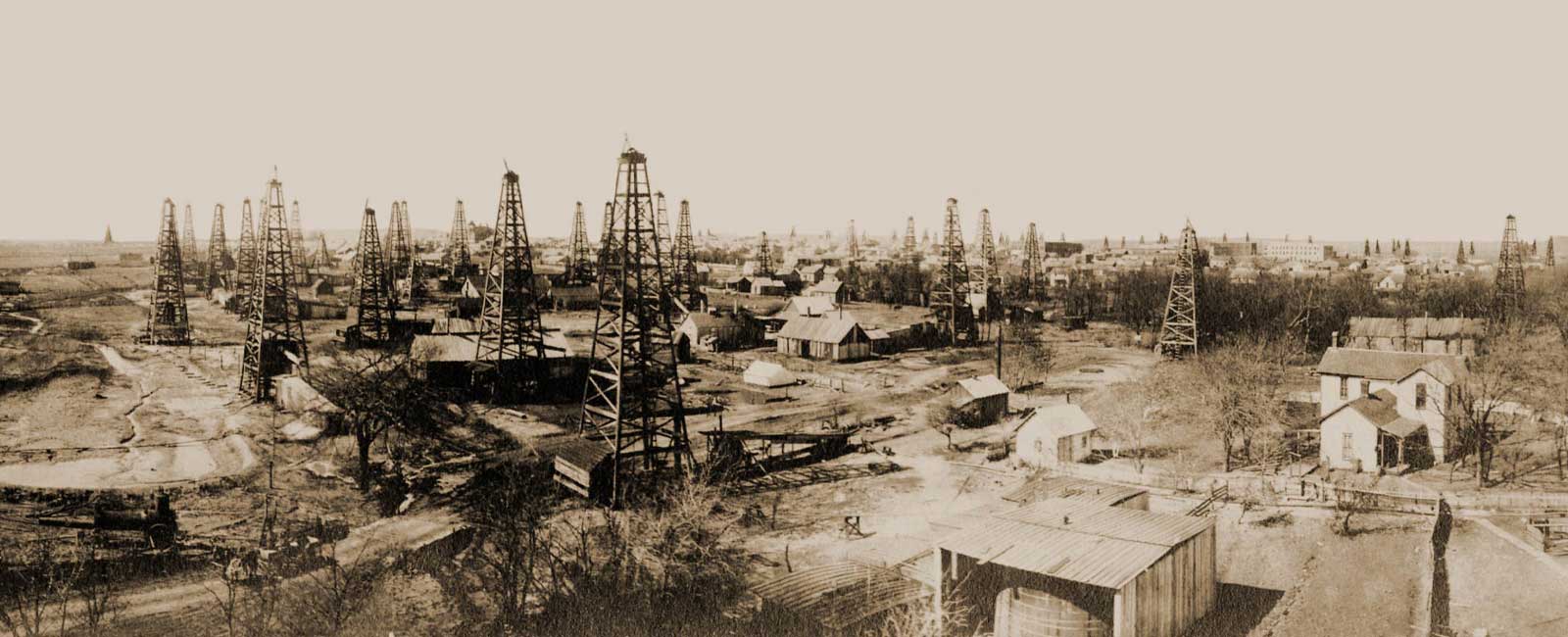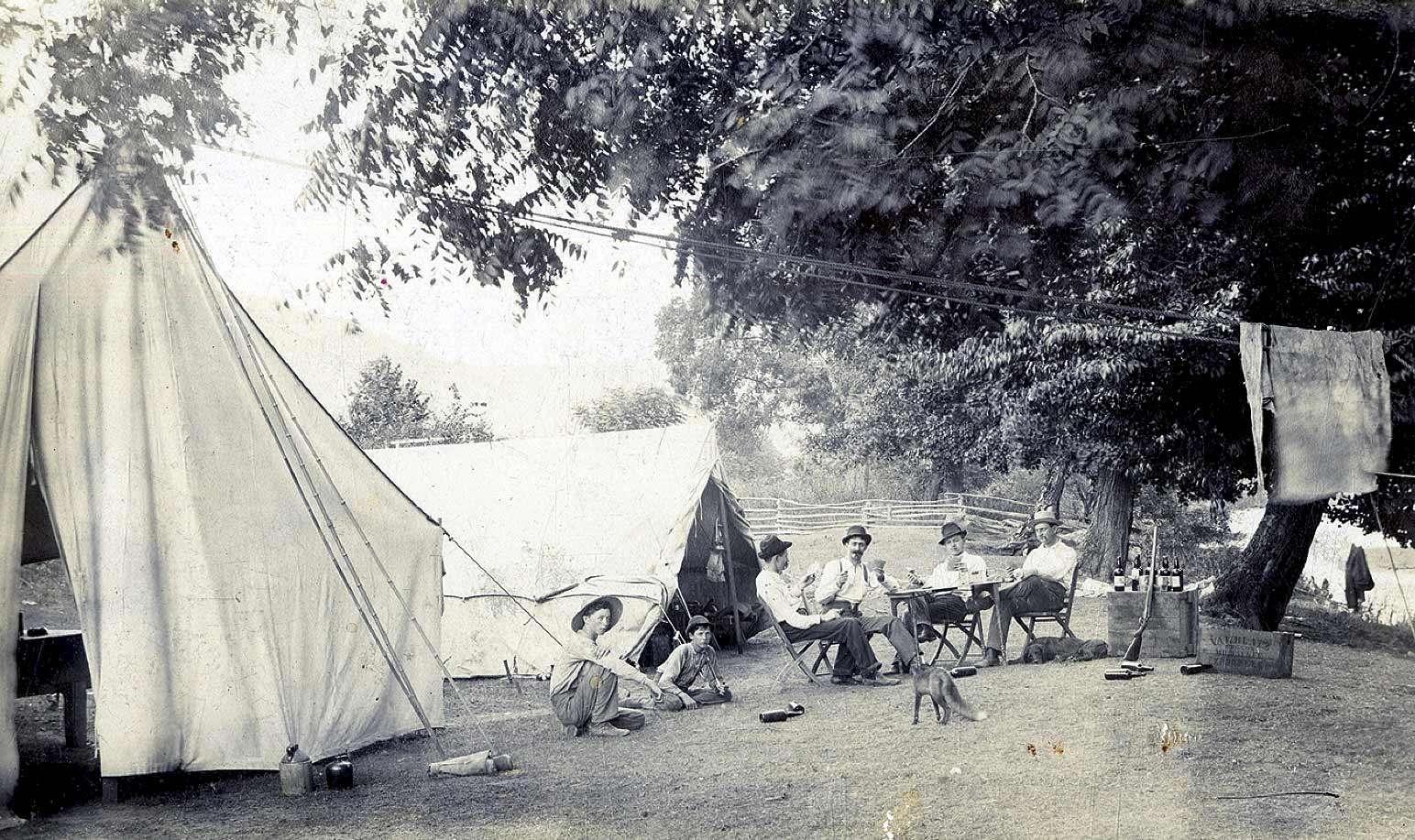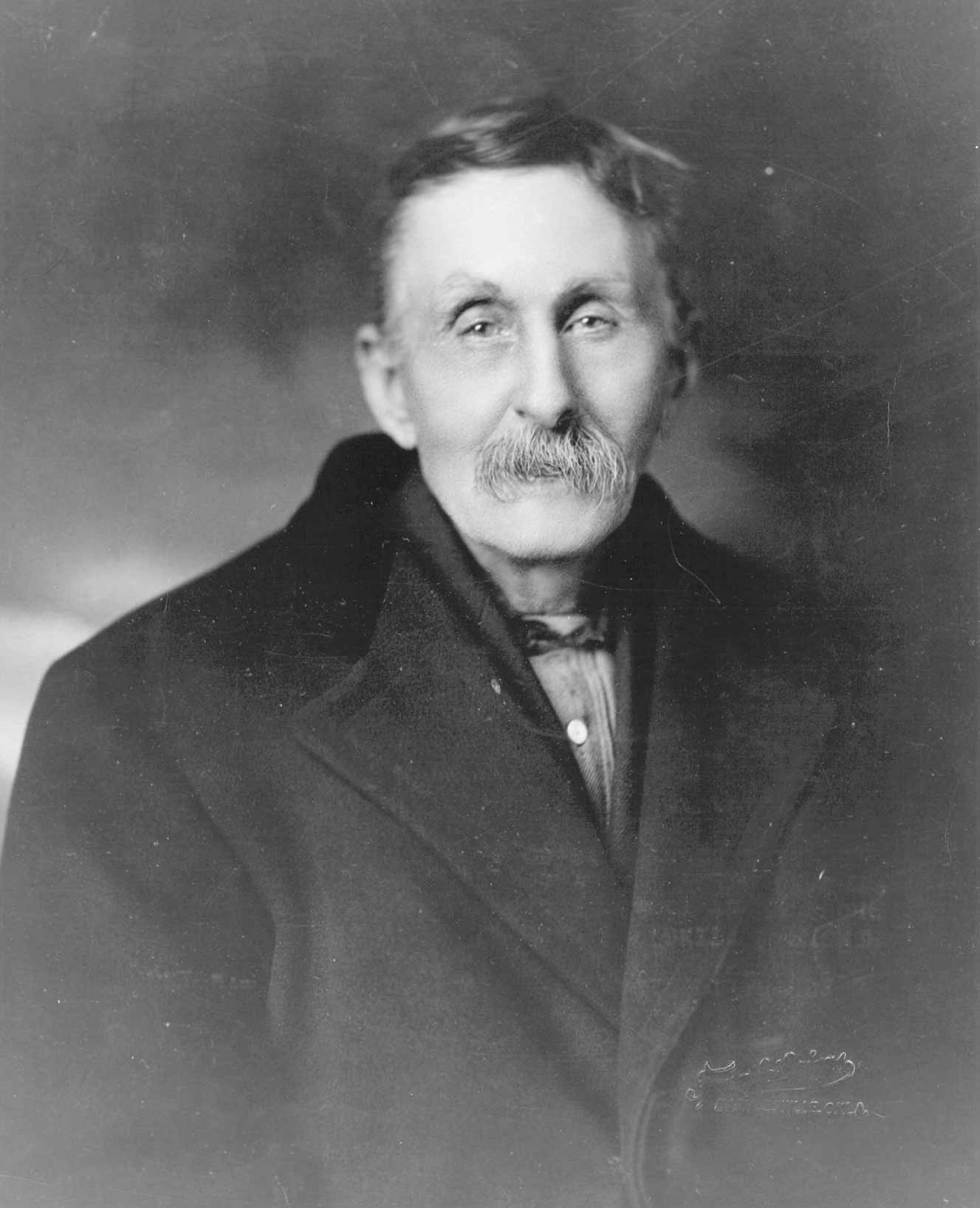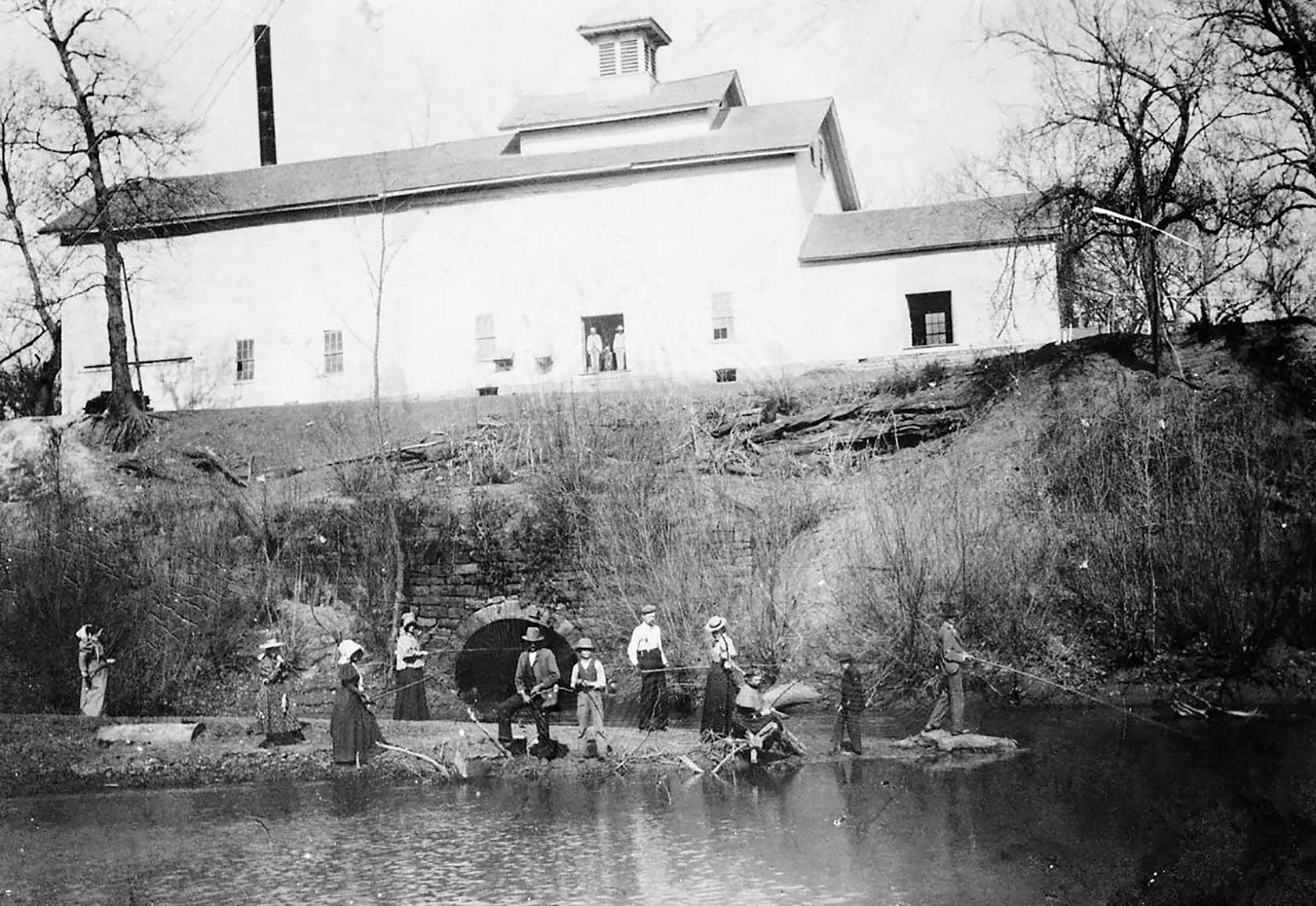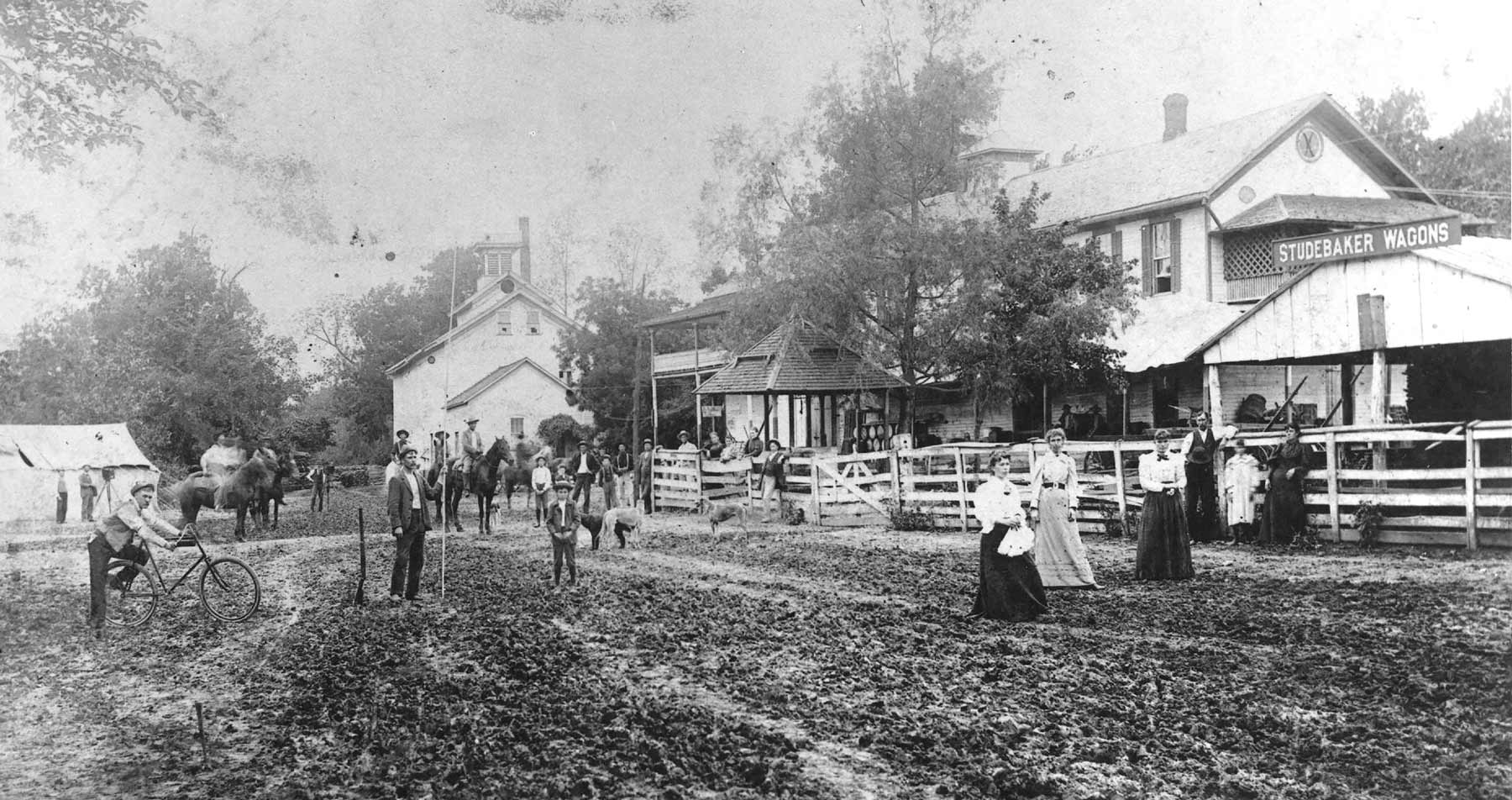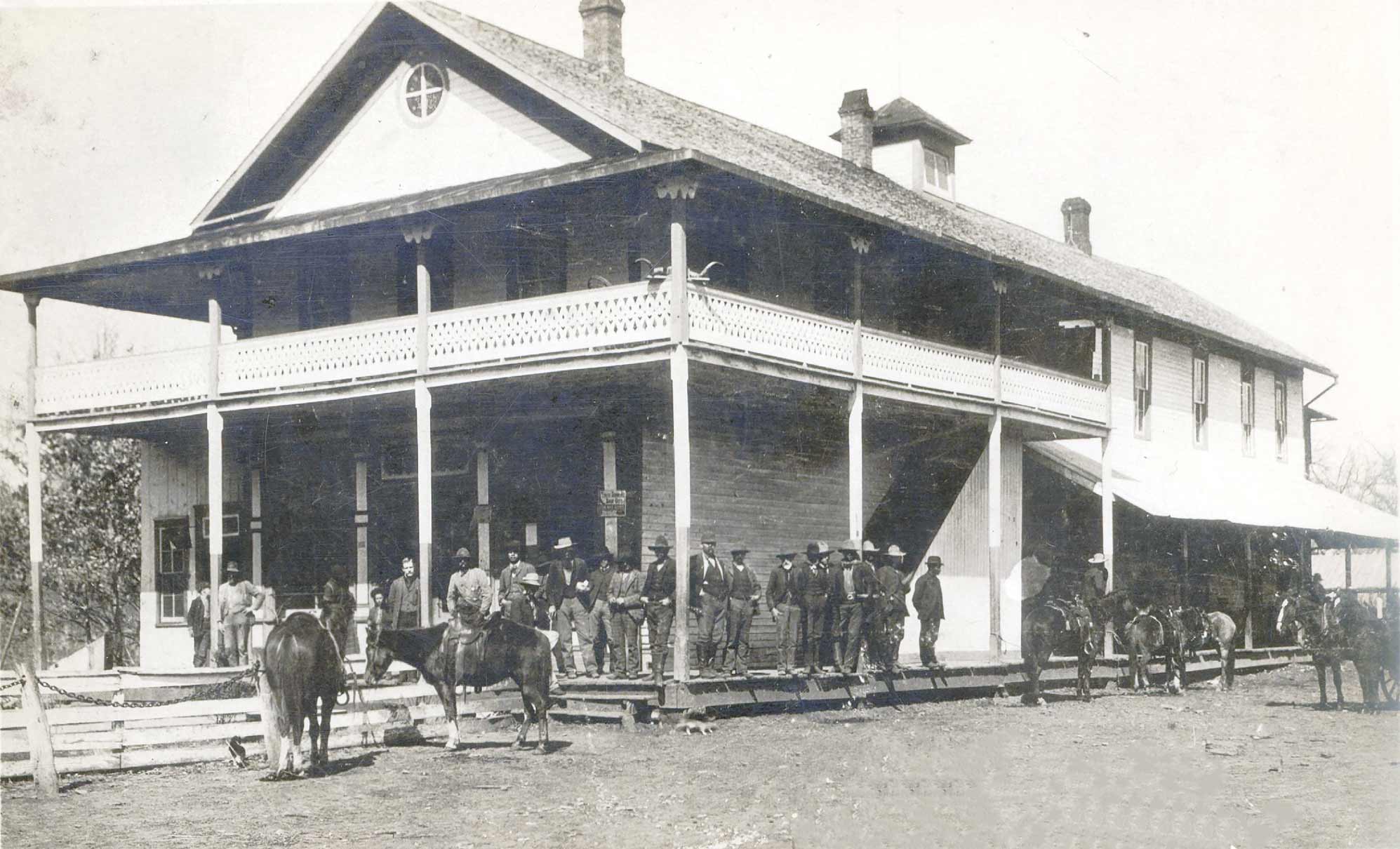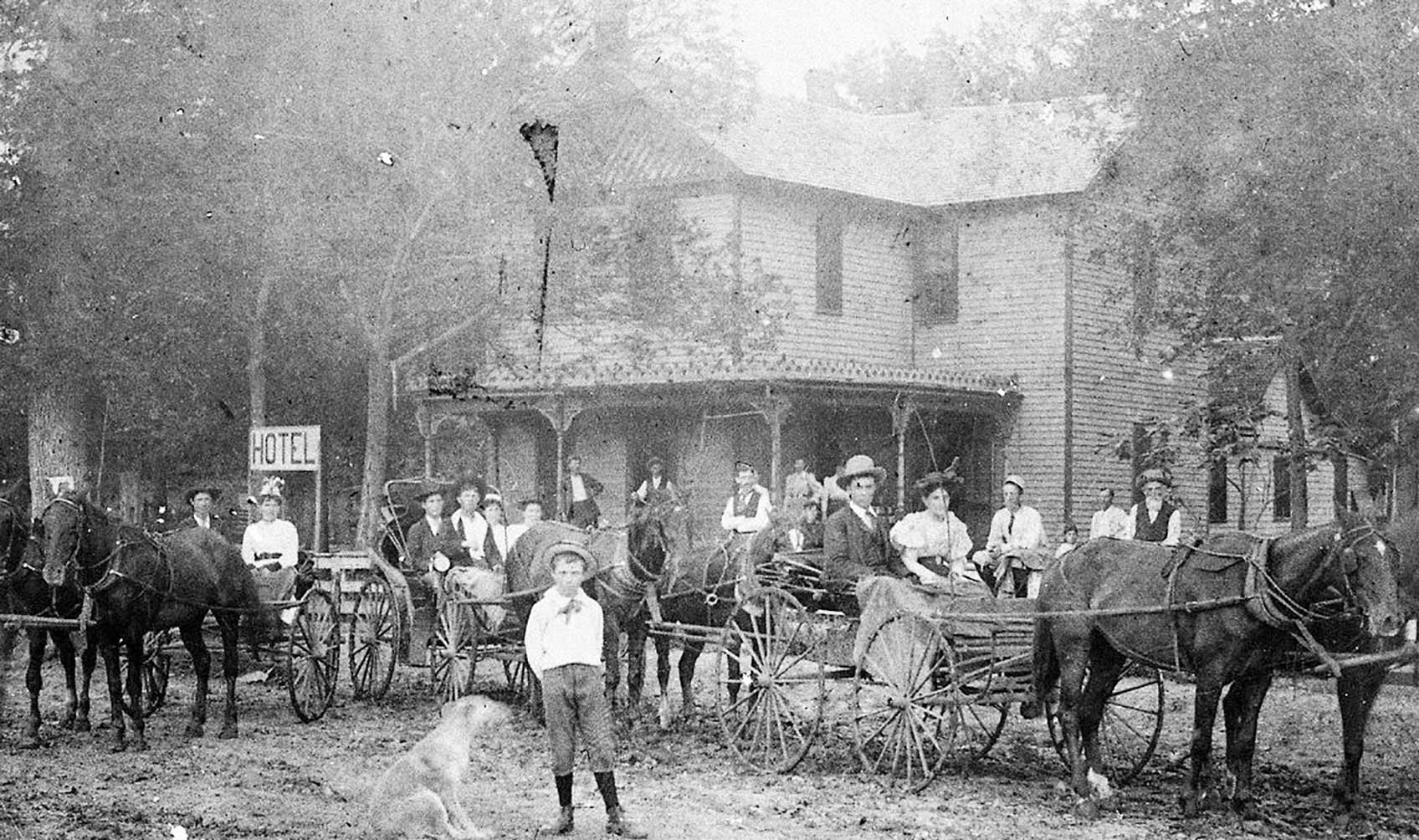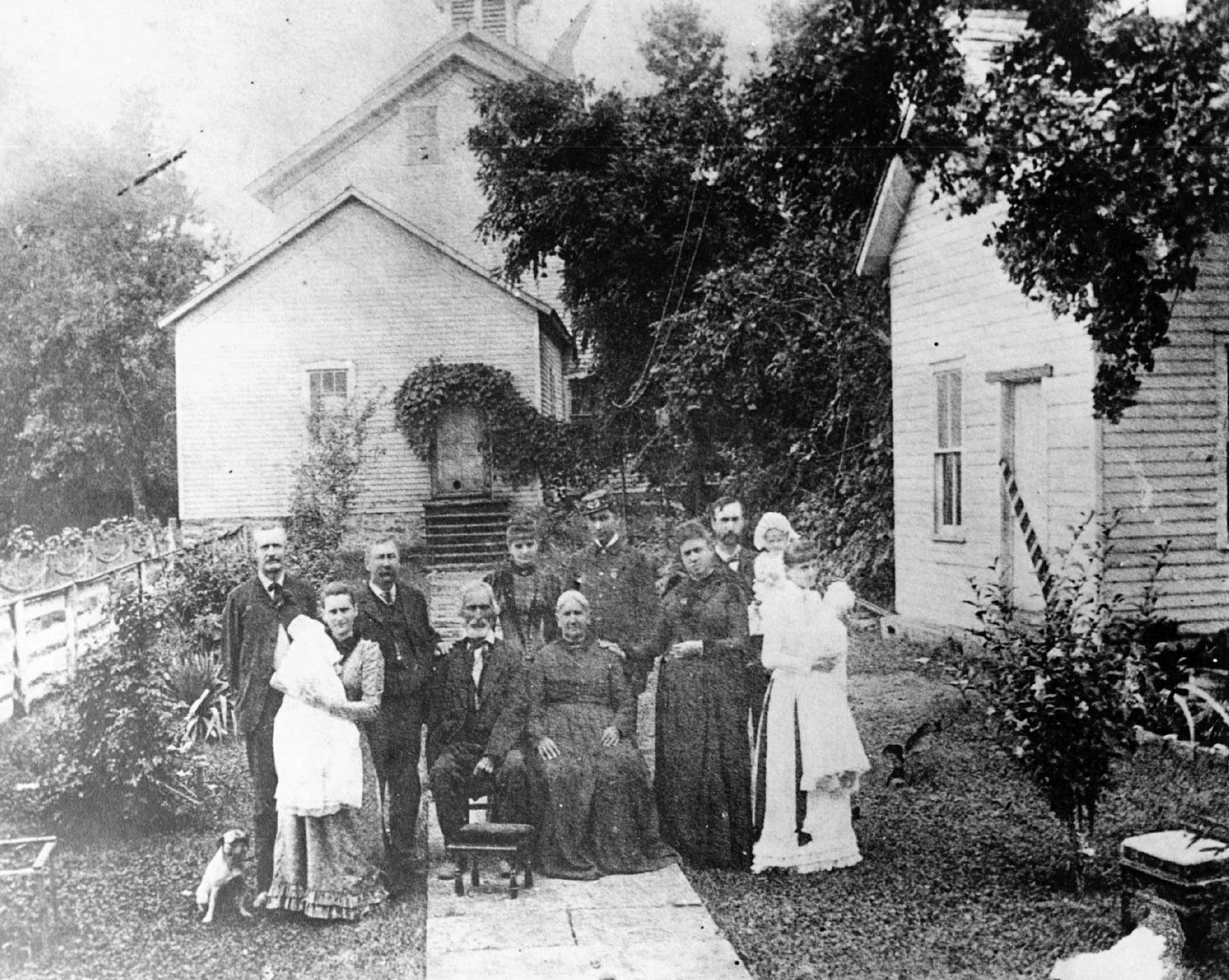During the 1800s, Native Americans lived on this land — they hunted the abundance of game and fished the Caney River for its bounty. Trees were few and trails aimlessly crisscrossed bluegrass prairie. And, white men allowed to trade in the Cherokee Nation were required to be married to an Indian maiden, adopted into the tribe, or purchase a trade permit.
Indian Territory was sparsely inhabited and freely roamed by the likes of Osage Chief Black Dog. His trail from Claremore passed his Silver Lake hunting camp and proceeded north crossing the Caney River near the current Adams Boulevard Bridge, north to cross the river at the horseshoe bend, and then followed the river west to cross Black Dog Ford at the confluence of Butler Creek and the Little Verdigris — later known as the Caney River — just south of Oak Park. Fording the Caney River safely required a rock or shale bottom to cross, thus these locations.
At Black Dog Ford, James Leontine Butler, an intermarried Cherokee, established an early trading post and added the Little Verdigris post office December 1859. When the Civil War erupted in 1861, Butler recruited a unit of Cherokee Mounted Rifles that included Will Rogers’ father, Clement Rogers. Confederate Captain Butler served under General Stand Watie and after the Civil War, he retired to Texas and the post office closed.
During the Civil War, former Indian Agent turned Confederate Colonel, Douglas H. Cooper, was tasked with forcing Creek Indian Chief Opothlyahola’s band of free blacks, runaway slaves, Creek, Chickasaw and Seminole Indians north to Fort Row, KS. A series of three Indian Territory battles — Round Mound at Yale, Chusto-Talasah at Sperry and Chustenahlah near Skiatook — called the Trail of Blood on Ice, resulted in a Civil War skirmish on Black Dog Creek as Opothlyahola’s band fled to Kansas. Winter hampered their travel with frostbite, hypothermia and starvation. In the wake of battle, the land was scarred and soaked in blood.
Oklahoma was not yet a state — this was still Indian Territory. Once slaves escaped into I.T., there was a slight sense of protection from law officers and bounty hunters under the wing of the Five Tribes as sovereign nations. It was not a coincidence the battle occurred at Black Dog Creek. The free blacks and runaway slaves traveling with Chief Opothlyahola were aware of the “Underground Railroad” trail that passed Gap Road and Silver Lake, following the Black Dog Trail along the Caney River to freedom in Kansas.
